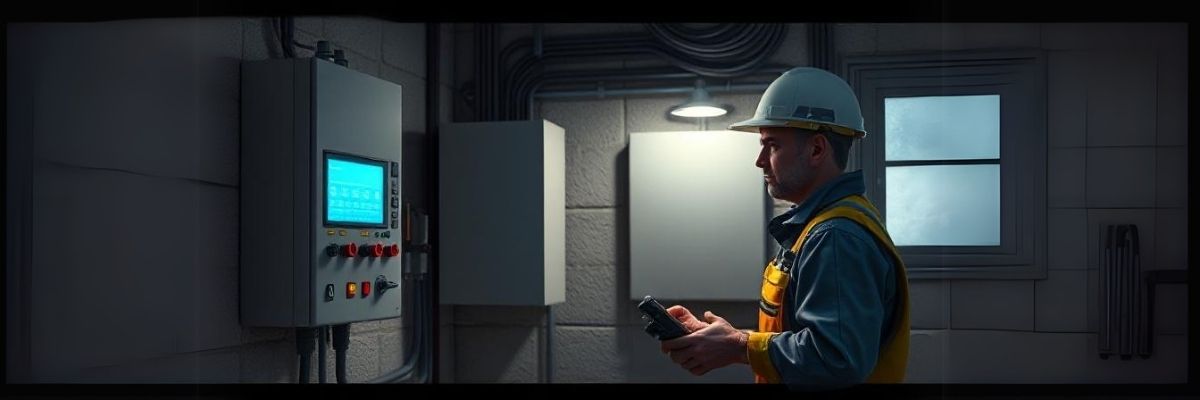
How Do I Connect My Portable Power Station to My House?
Grabbed your portable power station during a blackout—only to find you’ve got no idea how to actually hook it up to your house? You’re not alone. Whether it’s storm season or a sudden outage, having a reliable setup can make all the difference. In this guide, we’ll show you exactly how to safely, legally, and effectively connect your power station to your home. No jargon. Just the practical steps you need.
Not sure which power station is right for you?
Take the quiz!
How to Connect a Portable Power Station to Your House Safely and Legally
How to Connect a Generator to Your House Without Transfer Switch
Understanding Breaker Interlocks
Breaker interlocks allow you to isolate your main breaker when using your power station—provided they’re installed professionally and meet safety standards.
Why Portable Power Shouldn't Backfeed into Wall Outlets
You should never plug a generator directly into your wall socket. That’s where the real danger starts.
Temporary and Safe Off-Grid Alternatives
If you’re off-grid temporarily, you can run extension leads from the power station to individual appliances. Just keep it outside and dry.
Legal Ways to Connect a Generator to Your House in Australia
What the Wiring Rules Say (AS/NZS 3000:2018)
The wiring rules clearly ban dangerous DIY setups like plugging a generator into a wall socket. This "backfeeding" can electrocute utility workers or damage your gear. It’s illegal and unsafe.
Avoiding Dangerous Backfeeding Practices
Instead, licensed electricians must handle any setup involving your switchboard. They’ll ensure your system is isolated from the grid and follows all local regulations.
The Role of a Licensed Electrician
Even if it seems simple, always consult a qualified professional. Proper connections protect your gear—and your household.
How to Connect a Portable Power Station to Your House for Emergency Backup
How to Hook Up Generator to Your House with Transfer Switch
Manual Transfer Switches: A Simple and Safe Option
Manual models let you flip the switch yourself when the power goes out. It’s straightforward and reliable.
Automatic Transfer Switches: Seamless Power Control
They detect when the mains cut out and automatically shift the load to your generator. Great for critical devices like fridges or CPAP machines.
Breaker Interlocks: An Alternative Connection Method
They ensure you can’t run grid and generator power at the same time—but only if installed by a qualified electrician.

How to Connect a Portable Power Station to Your House Panel Using a Transfer Switch
Choosing the Right Setup for Your Portable Power Station
Using an Inlet Box to Isolate Power Safely
Use an inlet box mounted outside your home. It lets you plug in your generator without running cords through doors or windows.
Choosing the Right Generator Cord and Length
Match your cord to your power station's output. Look for heavy-duty, weatherproof options with the correct amperage rating.
Outdoor Setup and Placement Considerations
Place your power station in a shaded, well-ventilated spot away from foot traffic. Even though it’s battery-powered, safety still matters.
Professional Installation for Your Home Generator Setup
Why Hiring an Electrician Is Essential
Hiring a licensed electrician isn’t just smart—it’s mandatory in most cases. They’ll handle permits, wiring, and inspection so you don’t have to worry.
Complying with Local Permits and Inspections
Some councils may require permits for installations involving switchboards. Check before you start.
Ensuring Proper Grounding and Load Management
Proper grounding prevents electrical shock and damage. Load balancing ensures your generator doesn’t get overwhelmed.
Maximising the Performance of Your Portable Power Station at Home
Preparing Your Home for Reliable Generator Backup
Identifying Critical Circuits to Prioritise
Figure out which appliances you absolutely need. Lights, fridge, modem? Maybe a heater in winter?
Creating an Energy Plan for Outages
Know what runs when and for how long. This helps you stretch battery life and prevent overload.
Must-Have Accessories for Efficient Setup
Stock up on cords, adaptors, and surge protectors. Don’t forget weather protection for outdoor connections.

Testing and Maintaining Your Portable Power Station Setup
Simulate an Outage to Check Everything Works
Flip the transfer switch, unplug the grid, and make sure everything runs smoothly.
Regular Charging, Firmware Updates, and Cable Inspections
Charge your power station regularly. Update its firmware if it has an app. Check cables for fraying or damage.
Troubleshooting Connection Issues Quickly
Is the breaker tripped? Is the cord faulty? Small fixes now prevent major problems later.
How to Extend Runtime and Improve Generator Efficiency
Use Low-Wattage Appliances During Outages
LED lights instead of halogens. Portable fans instead of big heaters.
Turn Off Non-Essential Devices to Conserve Power
That toaster doesn’t need to stay plugged in all night.
Maximise Runtime with Pass-Through Charging When Possible
If your unit supports pass-through charging, plug in a solar panel while you use it.


